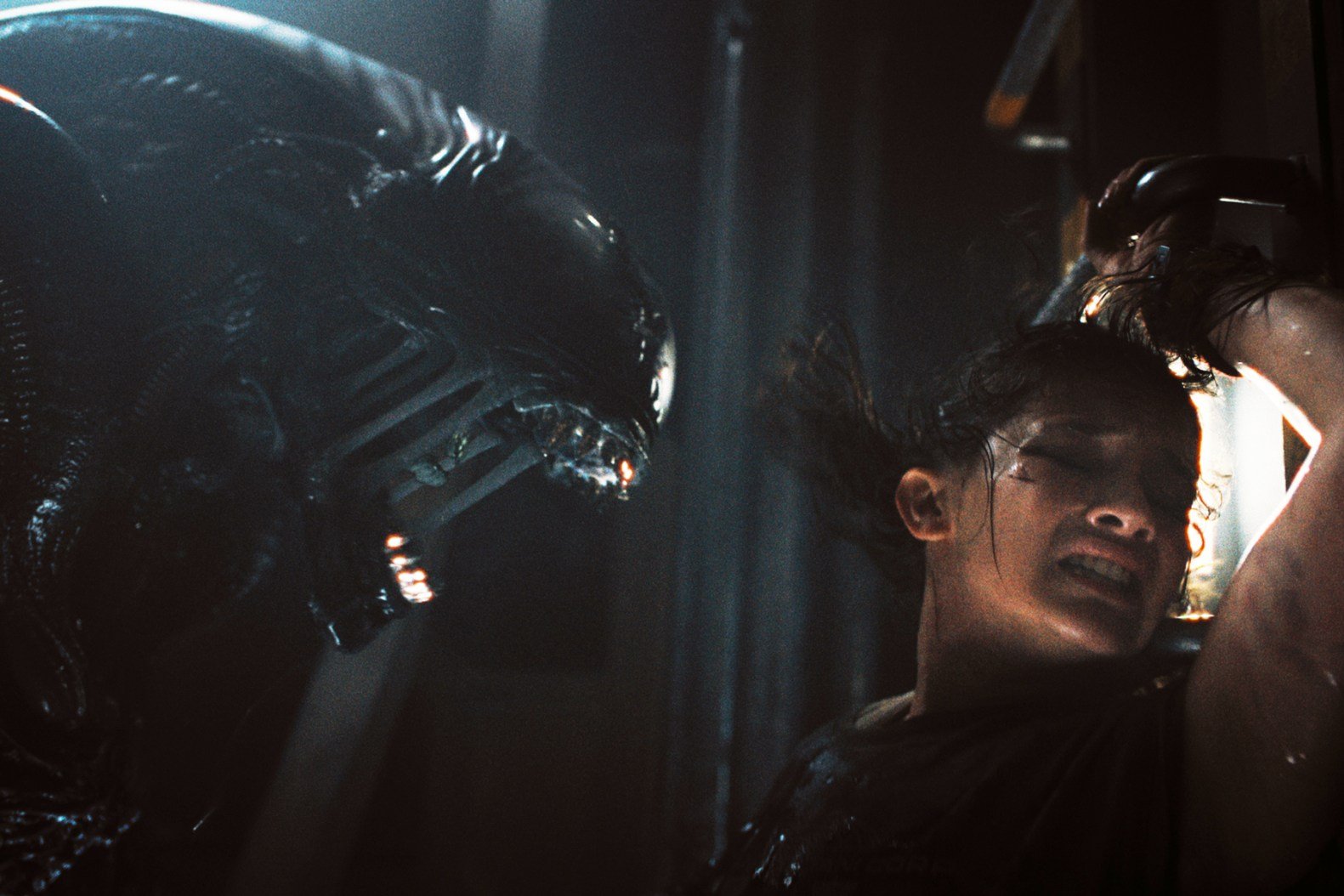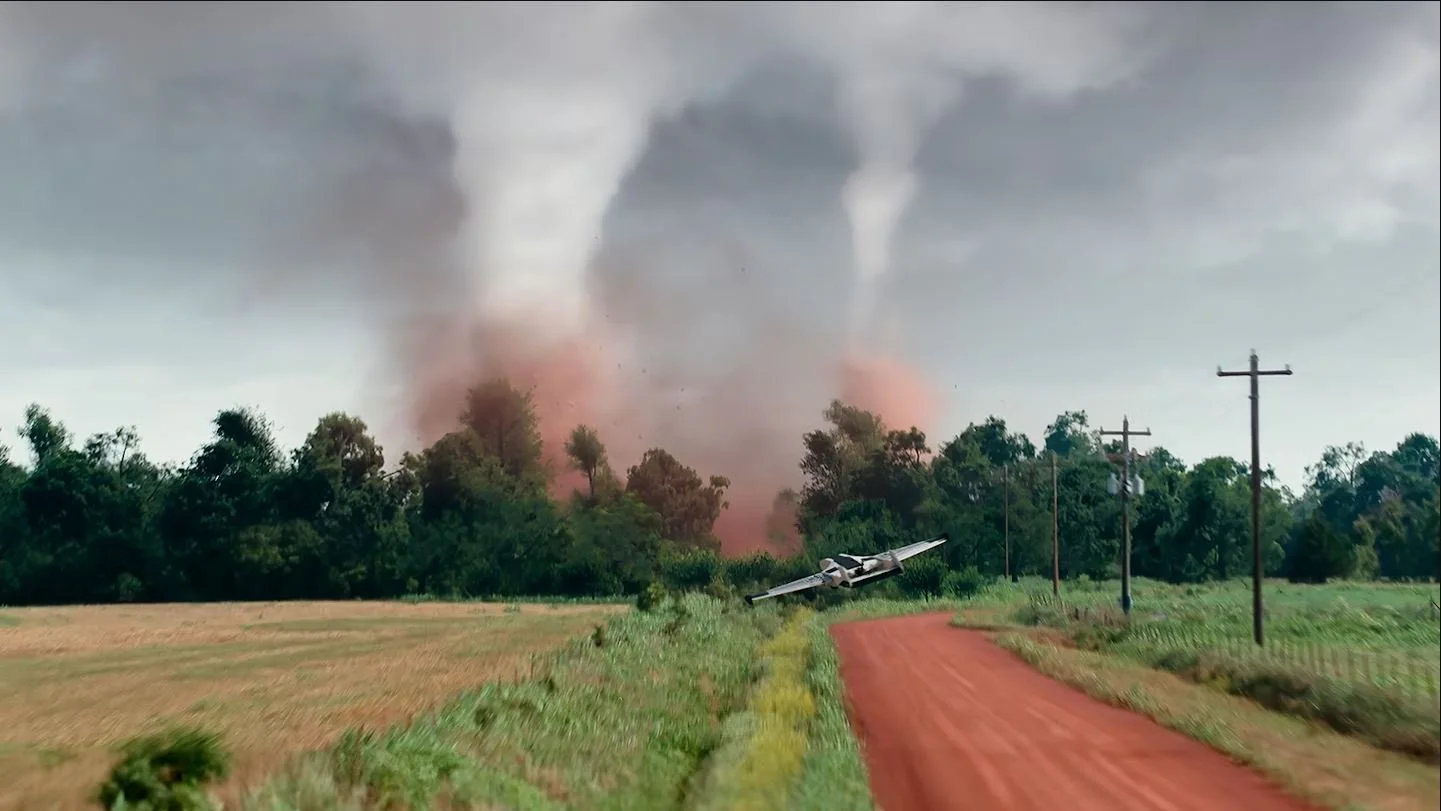ALIEN: ROMULUS
Directing: B+
Acting: A-
Writing: B
Cinematography: B+
Editing: B+
Special Effects: B+
Alien: Romulus plays a lot like it’s just “The Alien Franchise’s Greatest Hits.” Whether that’s a good or bad thing is a matter of opinion, but I mean it very much as a compliment.
There’s a fine line between homage and artistic theft, and this film often straddles that line. There’s a lot of fan service going on here, and if you’re familiar with the previous Alien films, you will find yourself watching, as if on a visual scavenger hunt, for the references and visual nods to virtually all of them. I, for one, had mostly a great time with this.
The score, by Benjamin Wallfisch (Blade Runner 2049), almost immediately features recognizable musical references to the Jerry Goldsmith score from Ridley Scott’s classic original 1979 Alien. (Side note: it’s a bit of a stunner to realize this franchise is now 45 years old.) The story takes place either on or just above a colonized planet very reminiscent of that featured in James Cameron’s 1986 sequel Aliens, complete with elevator shafts and high wind levels—only in this case, it has an established, bustling society rather than a decimated group of fledgling colonizers. Even the films widely considered “lesser” in the franchise get nods, including a pretty obvious recreation of the most famous shot from David Fincher’s 1992 sequel Alien3, in which the alien hovers harrowingly close to Sigourney Weaver’s face. And this film’s already controversial final act is a basic recreation of the infamous final sequence from Jean-Pierre Jeunet’s 1997 sequel Alien Resurrection, only with the concept inverted. Not even the prequel films are excluded, as we get introduced to a creature with a passing resemblance to (but clearly not narratively connected to) the humanoid aliens from Ridley Scott’s 2012 semi-prequel Prometheus.
I have not seen the two prequels anywhere near as many times I have seen the so-called “Quadrilogy” of original films in the franchise; as far as I can recall, I have still seen Ridley Scott’s 2017 follow-up to Prometheus, Alien: Covenant, the one time. Which is to say, for all I know, Alien: Romulus also has some kind of direct nod to Covenant as well, and I just don’t remember it well enough to recognize it. The same could be said of Paul W.S. Anderson’s 2004 crossover Alien vs. Predator (which I did see but very much wish I hadn’t) or Colin and Greg Strause’s 2007 follow-up Alien vs. Predator: Requiem (the one feature film featuring “xenomorphs” that I never bothered to watch, by all accounts wisely), although these are quite rightly not considered officially part of the Alien anthology, and I rather hope that, rather than there being references that I did not recognize, Romulus director and co-writer Fede Alvarez and writers Rode Savages and Dan O’Bannon simply did not bother with them.
The story beats of Alien: Romulus pretty faithfully mirror those of the 1979 Alien, right down to the team of working class miners getting picked off one by one until one of the women emerges as the unlikely hero. This gives the story a certain quality of predictability, but Romulus still has plenty about it that makes it stand apart. Perhaps most significantly, the principal cast is all quite young—all adults, but somewhat barely: Cailee Spaeney (Civil War), for instance, is all of 26 years old, and her character, Rain, could easily be read as several years younger. None of the previous films in the franchise featured a principal cast exclusively of characters so young, and the characters here get introduced to us behaving with a kind of dipshittery authentic to their age.
Of course, we simply cannot have an Alien movie without a “synthetic” (“I prefer the term artificial person,” we are told), here a character named Andy, played by David Jonsson in easily the film’s best performance. Andy is a nearly obsolete model, a lifetime companion to Rain who was long ago orphaned by the dangers of the mining work her parents did. Jonsson has a uniquely nuanced understanding of a robot programmed to convey the subtle emotions of someone with a childlike devotion to a functional sibling, yet a relentless drive towards his “directive.” Depending in what disc gets inserted into a port in his neck, his directive is either to serve what’s best for Rain, or what’s best for the Weyland-Yutani Corporation, causing subtle shifts in allegiances depending on where we are in the story—and, thankfully, Romulus never goes down the clichéd route of a robot taking on implausibly human motivations counter to programming.
It’s difficult to gauge how successfully Alien: Romulus might play to someone coming to this franchise for the first time with this movie. It’s certainly true that the experience is enhanced by a broad knowledge of nearly all the films that came before it. Even the obvious references land with somewhat varied success, and an iconic line from the 1986 Aliens gets uttered in a way that doesn’t work as well as the smattering recognition of appreciative chuckles through the audience might suggest. There is even an appearance of an actual character from an earlier film, which I won’t spoil except to say that it’s a digital recreation of an actor who has since passed on, and the one instance in the film of obviously subpar visual effects. (The rest of the movie looks great.)
The bottom line is that Alien: Romulus is a consistently and undeniably entertaining action-horror thriller, its most critical successes being its propulsive pacing due to skilled editing, and several sequences with exeptional cinematography. This feels like a lived-in world, fleshed out in new ways in spite of its admittedly unavoidable familiarity. If anything, it could be argued that it has a bit too much going on, but given the nesting layers of threats—not all of them from the xenomorphs—posed to these characters, it all clicks together surprisingly well. The most important thing I can tell you about this movie is that I had a blast, and it’s not often that can be said of the seventh film in a franchise.
Remember me? Remember this? It warms the heart to reminisce!
Overall: B+










